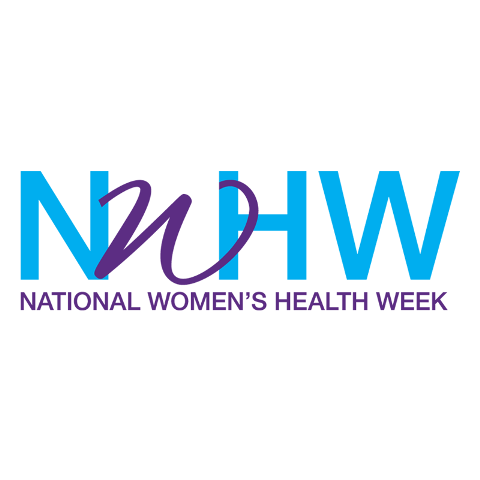What is a Pap test?
By: Marcela Vargas, Project Coordinator, Institute for Hispanic Health, NCLR
 Last week, as part of Cervical Cancer Awareness Month, we posted a blog “Three things to know about cervical cancer”. One of the best ways to prevent cervical cancer is getting regular Pap tests. Pap tests help find abnormal cervix cells when treatment is still fairly simple. This week, we are going to talk about what exactly happens when you get a Pap test.
Last week, as part of Cervical Cancer Awareness Month, we posted a blog “Three things to know about cervical cancer”. One of the best ways to prevent cervical cancer is getting regular Pap tests. Pap tests help find abnormal cervix cells when treatment is still fairly simple. This week, we are going to talk about what exactly happens when you get a Pap test.
Before the Pap test
There are a few things to consider when you schedule your Pap test. First, you should schedule your appointment for a day in which you will not have your period. Second, avoid using creams, gels, or other vaginal medication for two days before the test. Finally, avoid sexual activity for two days before the test. Following these guidelines increases the chance of accurate Pap test results.
When you arrive at the doctor’s office, a health care provider will ask you some questions about your health history. He or she will ask questions about your general health, period, and your sexual activity. This will help them decide what kind of care is right for you. Feel free to be as honest as you can when answering these questions; anything shared is kept between you and them.
During the Pap test
The provider will leave the room for a moment, to let you change into an examination gown. Once you have changed, they will ask you to lie on an exam table, with a sheet covering your legs and stomach. The health care provider will use a speculum to keep the vaginal walls open. This is done so they can see the cervix. They will use a small brush to get sample cells from the cervix. When this is happening, you may feel a small scrape. You may feel a bit uncomfortable, but this should not be painful. The sample is then placed in a tube and sent to a lab for testing. This test determines if the cells are normal or not. The whole process only takes a few minutes.
After the Pap test
A few weeks after the test, the clinic will contact you by phone or mail with your results. If you do not receive the results and it has been three weeks since your test, call the clinic and ask for the results. If your results are normal, you should continue getting your regular Pap tests. You can ask your health care provider how often they recommend you get tested. If the results are abnormal, you will be asked to return to the clinic for another test. The clinic will explain what happens next and inform you if the second test has abnormal results.
Once you know exactly what happens during a Pap test, it is much easier to go through the process. Remember, as a result of the Affordable Care Act, Pap tests are covered by insurance companies at no cost to you. If you still do not have insurance, the National Breast and Cervical Cancer Early Detection Program provides access to cervical cancer screening services. Although this is the last week of Cervical Cancer Awareness Month, you can get your Pap test at any time. Your life is precious. Get yourself tested!
Que es una prueba de Papanicolaou?
La semana pasada, como parte del Mes de la Concientización del Cáncer Cervical, publicamos un blog “Tres cosas que debe saber sobre el cáncer de cuello de útero”. Una de las mejores maneras de prevenir el cáncer de cuello uterino es conseguir una prueba de Papanicolaou regularmente. Las pruebas de Papanicolaou ayudan a encontrar las células anormales del cuello uterino temprano, cuando el tratamiento es más simple. Esta semana, vamos a hablar de lo que pasa cuando usted consigue una prueba de Papanicolaou.
Antes de la prueba de Papanicolaou
Hay varias cosas que considerar cuando se programa la prueba de Papanicolaou. En primer lugar, usted debe hacer una cita para un día en el que no tendrá su período. En segundo lugar, debe evitar el uso de cremas, geles u otros medicamentos vaginales durante dos días antes de la prueba. Finalmente, se debe evitar la actividad sexual por dos días antes de la prueba. Seguir estas pautas aumenta la probabilidad de obtener resultados precisos.
Al llegar a la clínica, un médico le hará algunas preguntas sobre su historia clínica. Serán preguntas acerca de su salud en general, su período y su actividad sexual. Las respuestas le ayudarán al médico decidir qué tipo de atención es el adecuado para usted. Siéntase libre de ser lo más honesto posible al contestar estas preguntas; todo compartido se mantendrá entre usted y el médico.
Durante la prueba de Papanicolaou
El proveedor sale de la sala de examen por un momento, que le permite a usted ponerse un vestido de examen. Una vez que se haya cambiado, le piden que se acueste sobre una mesa de examen, con una sábana para cubrir sus piernas y estómago. El médico usa un espéculo para mantener las paredes de la vagina abierta. Esto se hace para que puedan ver el cuello del útero. Se utiliza un cepillo pequeño para obtener muestras de células del cuello uterino. Cuando esto sucede, se puede sentir un pequeño rasguño. Usted puede sentir un poco incómodo, pero esto no debe ser doloroso. La muestra se coloca en un tubo y se envía a un laboratorio para su análisis. Esta prueba determina si las células son normales o anormales. El proceso completo sólo dura unos minutos.
Después de la prueba de Papanicolaou
Unas semanas después de la prueba, la clínica se pone en contacto con usted por teléfono o correo electrónico con sus resultados. Si usted no recibe los resultados y han pasado tres semanas desde la prueba, llame a la clínica y pida los resultados. Si los resultados son normales, usted debe continuar haciéndose la prueba de Papanicolaou regularmente. Usted puede preguntar a su médico con qué frecuencia se debe hacer la prueba. Si los resultados son anormales, se le pedirá que regrese a la clínica para otra prueba. La clínica le explicará lo que ocurre a continuación y le informará si la segunda prueba tiene resultados anormales.
Una vez que usted sabe exactamente lo que sucede durante una prueba de Papanicolaou, el proceso es mucho más fácil. En 2014, como resultado de la Ley de Cuidado de Salud, las pruebas de Papanicolaou son cubiertas por las compañías de seguros sin costo para usted. Si todavía no tiene seguro, el Programa Nacional de Detección Temprana del Cáncer de Mama y de Cuello Uterino proporciona acceso a los servicios de detección de cáncer de cuello uterino. Aunque ésta es la última semana del mes de concienciación del cáncer de cuello uterino, puede obtener la prueba de Papanicolaou en cualquier momento. Su vida es preciosa. ¡Hágase la prueba!

